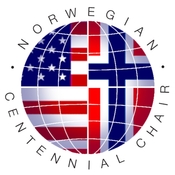About the project
Fluid flow and solute transport in reactive geological porous structures are pivotal in addressing pressing energy, environmental, and societal challenges such as geological storage of carbon dioxide (CO2). Basaltic rocks are proven suitable geological substrates for injecting large volumes of CO2, serving both emission reduction and carbon mineralization.
This project is a transatlantic research collaboration which aims to explore processes essential for unlocking the full potential of large-scale subsurf ace CO2 storage through carbon mineralization.
Objectives
The overarching research objective is to establish a fundamental understanding of coupled mineral dissolution and precipitation in geological systems with natural mineralogical heterogeneity, preferential flow pathways, and dead ends.
Background
A comprehensive understanding of mineral dissolution and precipitation within porous and fractured media is indispensable for a multitude of subsurface applications like geological CO2 storage, underground hydrogen storage, geothermal extraction, and contamination remediation. These applications are instrumental in addressing contemporary environmental, societal, and climate challenges.
Effectively designing engineering practices, assessing performance, and evaluating environmental impacts necessitate a predictive grasp of physicochemical interactions between mineral surfaces, surrounding fluids, and evolving porous geometries. Experimental and numerical approaches have frequently simplified the complexity of natural systems, overlooking the physical and geochemical heterogeneity inherent in geological media.
We will conduct laboratory experiments and numerical simulations to address this knowledge need to explore mechanisms governing interactions between dissolution and precipitation in porous systems characterized by realistic physical and chemical heterogeneities.
Employing a combination of micro-scale experiments and spatiotemporal simulations in analog and natural rock systems, we aim to identify constitutive relationships that can describe these coupled reactions on larger scales.
Financing
The project is funded by the Norwegian Centennial Chair (NOCC) as a transatlantic collaboration between the University of Oslo and the University of Minnesota.
The mission of the Norwegian Centennial Chair Program is to promote transatlantic collaboration and exchange in a broad range of disciplines and fields through different opportunities for research and education. Partners are University of Oslo (UiO), NMBU, and the University of Minnesota (UM).
Cooperation
The research project relies on the work and collaboration between researchers in CCS storage from Dept of Geosciences, University of Oslo and the Center of Geo-processes in Mineral Carbon Storage (GMCS) at University of Minnesota. Partner institutions, follow links below:

